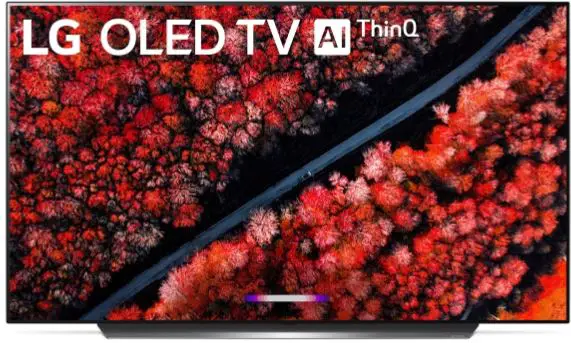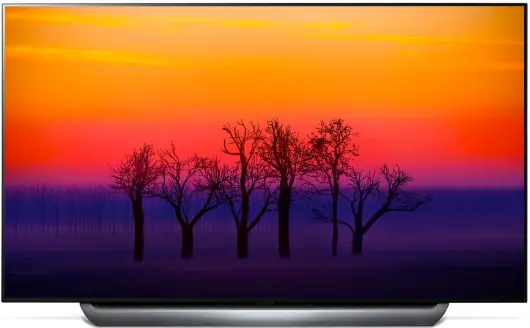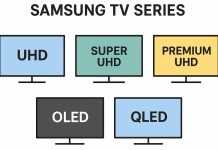LG unveiled the OLED C9 series in 2019, introducing a few notable improvements over its predecessor, the OLED C8 from 2018. While both TVs share many similarities in terms of screen technology, resolution, and design, several updates to the C9 series enhance its performance and compatibility. Below is a detailed comparison of the two models based on their technical specifications and key differences.
Key Differences
- Processor
The C9 is equipped with the second-generation a9 Gen 2 Intelligent Processor, a more advanced version than the a9 Intelligent Processor found in the C8. While LG does not disclose specific technical details about these processors, the updated model is optimized for improved picture and sound quality through AI-driven enhancements. - Voice Assistant Integration
The C9 adds support for Amazon Alexa, broadening its smart home integration capabilities. This feature allows users to control the TV and connected devices through voice commands. - Operating System
The C9 runs on Web OS 4.5, an updated version of LG’s Smart TV platform. In contrast, the C8 operates on Web OS 4.0, offering fewer features and a less refined user experience. - Bluetooth
The C9 upgrades to Bluetooth 5.0, offering better connectivity, faster speeds, and greater compatibility with newer devices compared to the C8, which uses Bluetooth 4.2. - HDMI Ports
A significant upgrade in the C9 is the inclusion of HDMI 2.1 ports over the HDMI 2.0 ports in the C8. HDMI 2.1 ports support such advanced features, Enhanced Audio Return Channel (eARC). These enhancements make the C9 especially attractive to gamers and home theater enthusiasts.
Design and Display
Both the C9 and C8 share a sleek flat-panel design and utilize OLED WRGB technology with Pixel Level Dimming for exceptional picture quality. They both support a resolution of 3,840 x 2,160 (4K UHD) and feature a 120 Hz refresh rate, making them ideal for high-definition viewing.
Conclusion
While the LG OLED C9 (2019) and OLED C8 (2018) offer similar visual performance, the C9 introduces enhancements in software, connectivity, and compatibility. For gamers and tech enthusiasts, the HDMI 2.1 ports and Bluetooth 5.0 support provide tangible benefits. However, for general users primarily focused on image quality, the differences may not justify an upgrade. Both models remain exceptional choices within their class.

Technical specifications of LG OLED C9 and LG OLED C8 in the table below:
| Parameter | LG OLED C9 (2019) | LG OLED C8 (2018) |
|---|---|---|
| Screen | ||
| Screen Size | 55″, 65″, 77″ | 55″, 65″, 77″ |
| Actual Size | 54.6″, 64.5″, 76.5″ | 54.6″, 64.5″, 76.5″ |
| Type | Flat Panel | Flat Panel |
| Resolution | 3,840 x 2,160 | 3,840 x 2,160 |
| Bit Depth | 10-bit | 10-bit |
| Panel Type | WRGB OLED | WRGB OLED |
| Dimming Technology | Pixel Level Dimming | Pixel Level Dimming |
| Video | ||
| Refresh Rate | 120 Hz | 120 Hz |
| Color | Intense Color, Billion Rich Colors, Advanced Color Enhancer, True Color Accuracy Pro | Intense Color, Billion Rich Colors, Advanced Color Enhancer, True Color Accuracy Pro |
| Contrast | Object Depth Enhancer, Ultra Luminance Pro | Object Depth Enhancer, Ultra Luminance Pro |
| Clarity | Quad Step Noise Reduction, Frequency Based Sharpness Enhancer | Quad Step Noise Reduction, Frequency Based Sharpness Enhancer |
| Upscaler | 4K Upscaler | 4K Upscaler |
| HDR | Dolby Vision, HDR10, HLG, HDR Dynamic Tone Mapping Pro | Dolby Vision, HDR10, HLG, HDR Dynamic Tone Mapping Pro |
| Picture Processor | a9 Gen 2 Intelligent Processor | a9 Intelligent Processor |
| AI Features | ||
| LG ThinQ AI | Yes | Yes |
| Google Assistant | Yes | Yes |
| Alexa | Yes (device sold separately) | Yes (device sold separately) |
| Google Home Compatibility | Yes | Yes |
| Amazon Alexa Compatibility | Yes | Yes |
| Voice Recognition | Yes | Yes |
| Smart TV | ||
| OS | Web OS 4.5 | Web OS 4.0 |
| Remote Control | Magic Remote Control | Magic Remote Control |
| LG Content Store | Yes | Yes |
| Web Browser | Yes | Yes |
| Audio | ||
| Dolby | Yes | Yes |
| DTS | Yes | Yes |
| Sound Output | 40W (20W Woofer) | 40W (20W Woofer) |
| Woofer | Yes | Yes |
| Speaker Type | 2.2CH | 2.2CH |
| Bluetooth Audio Playback | Yes | Yes |
| LG Sound Sync | Yes | Yes |
| Game Mode | Yes | Yes |
| Connectivity | ||
| Wi-Fi | Yes | Yes |
| Bluetooth | Version 5.0 | Version 4.2 |
| IP Control | Yes | Yes |
| HDMI-CEC (Simplink) | Yes | Yes |
| Smartphone Connectivity | Yes | Yes |
| HDMI | 4 (version 2.1) | 4 (version 2.0) |
| ARC (Audio Return Channel) | Yes | Yes |
| USB | 3 | 3 |
| Ethernet | Yes | Yes |
| RF In (Terrestrial/Cable) | Yes | Yes |
| RF In (Satellite) | Yes | Yes |
| Digital Audio Out | Yes | Yes |
| Digital Broadcasting (US) | ATSC/ClearQAM | ATSC/ClearQAM |
| Digital Broadcasting (EU) | DVB T/T2/C/S/S2 | DVB T/T2/C/S/S2 |
| Analog Tuner | Yes | Yes |






